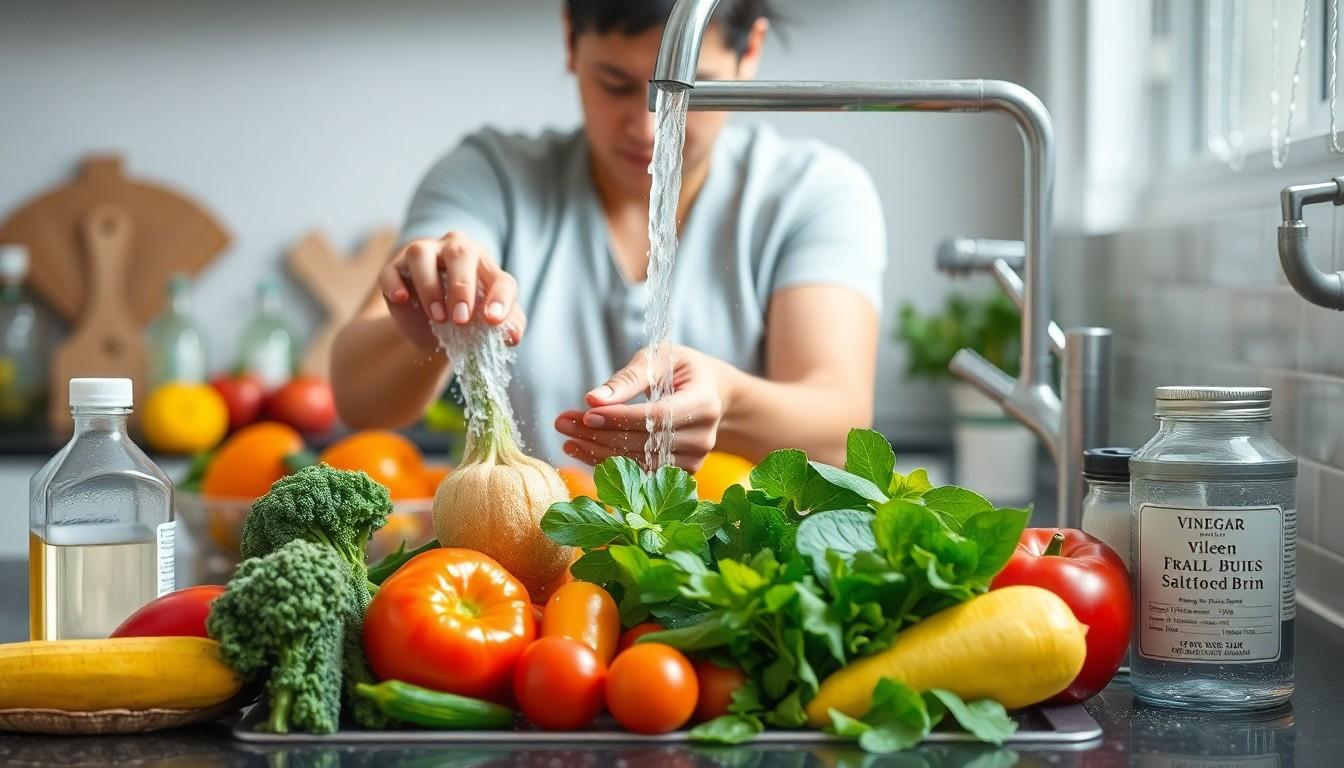The Best Fluffy Pancakes recipe you will fall in love with. Full of tips and tricks to help you make the best pancakes.
In a world where food and drink often come with a side of mystery, it’s time to take charge of what goes into our bodies. Imagine sipping that refreshing juice or biting into a crisp apple, knowing it’s free from hidden nasties. Purifying food and drink isn’t just a trend; it’s a revolution in how we nourish ourselves.
Importance Of Purifying Food And Drink
Purifying food and drink plays a crucial role in maintaining health and well-being. Clean ingredients reduce the risk of exposure to harmful chemicals and toxins. Transparency in food sourcing enhances consumer confidence. Improved nutrition arises from purifying processes that remove additives, preservatives, and contaminants.
Studies indicate that consuming less processed food results in better health outcomes. For example, a diet rich in whole foods promotes optimal body function. Foodborne illnesses also decrease when food and drink undergo purification methods. Purified water offers hydration without the risks associated with contaminants or pollutants.
Adopting purifying practices fosters a deeper connection to what individuals consume. Cultivating awareness about ingredients empowers informed choices. Communities benefit from local, organic sources that minimize environmental impact. A variety of purification methods exist, including filtration, fermentation, and boiling, each with unique advantages.
Purification methods enhance the flavor and quality of food and drink. Taste often improves when impurities are removed, encouraging a more satisfying eating experience. Prioritizing purity extends to beverages as well, leading to healthier adults and children alike. Families that focus on clean nutrition strengthen their bonds and establish lifelong habits.
Overall, purifying food and drink contributes significantly to the overall quality of life. Effective purification supports sustainable practices and promotes a healthier future.
Methods To Purify Food And Drink

Purifying food and drink encompasses various techniques that ensure safety and enhance quality. Here’s a breakdown of effective methods for both water and food.
Water Purification Techniques
Boiling serves as a straightforward method to kill harmful bacteria and viruses in water. Filtration systems utilize activated carbon or reverse osmosis to remove contaminants, often improving taste. UV light purifiers inactivate pathogens through exposure to ultraviolet radiation, ensuring safe drinking water. Chemical treatments using chlorine or iodine tablets can disinfect water in emergency situations. Each method offers distinct advantages, allowing individuals to choose based on their specific needs or resources.
Food Cleaning Practices
Rinsing fruits and vegetables under running water removes dirt and pesticide residues. A vinegar solution can serve as a natural disinfectant when soaking produce. Peeling skins also helps eliminate surface contaminants on certain fruits and vegetables. Saltwater brine acts as an additional rinse to help remove contaminants effectively. Additionally, thorough cooking methods kill harmful microorganisms in food, enhancing safety while preserving flavor.
Benefits Of Purifying Food And Drink
Purifying food and drink offers numerous advantages across various aspects. Notably, health-related benefits become evident through cleaner consumption practices.
Health Benefits
Reduced exposure to harmful chemicals significantly enhances individual health. Studies show that clean, unprocessed food can lower the risk of chronic diseases. When people consume purified beverages, hydration improves without toxins. Enhanced nutrient absorption from clean food further supports overall wellness. Additionally, a diet rich in whole foods fosters better digestion, which is crucial for maintaining energy levels. Clean ingredients help minimize foodborne illnesses, providing peace of mind while eating.
Environmental Impact
Purifying food and drink also positively influences the environment. Sustainable practices like using locally sourced ingredients reduce carbon footprints. Water conservation efforts in purification processes safeguard vital resources. By minimizing waste through effective purification methods, people contribute to a healthier planet. Supporting organic farming and local agriculture fosters ecological balance. When individuals commit to purifying their food and drink choices, they encourage responsible consumption. This collective action aids in reducing pollution and conserving biodiversity, creating a more sustainable future for all.
Common Contaminants In Food And Drink
Contaminants can significantly affect food and drink quality. Bacteria such as E. coli and Salmonella often reside in improperly handled meats and unwashed vegetables. Chemical residues from pesticides also pose risks to consumers, potentially leading to harmful health effects.
Heavy metals like lead and mercury find their way into food through contaminated soil or water sources. Microplastics, increasingly common in seafood, accumulate in the marine environment, raising concerns over their long-term impacts on human health.
Food additives like artificial colors, flavors, and preservatives may enhance appearance or shelf life, but some studies link them to adverse effects. Pathogens entering food supply chains during processing and transportation worsen contamination concerns, necessitating rigorous safety protocols.
Mold toxins from spoiled food can develop unnoticed, causing digestive issues for those who consume them. Allergens such as nuts, dairy, and gluten frequently trigger reactions, emphasizing the importance of clear labeling and awareness for consumers.
Undercooked foods can harbor harmful organisms, underscoring the need for thorough cooking methods. Contaminated water sources may lead to unsafe drinking water, urging the adoption of effective purification techniques.
Keeping track of these contaminants aids in making informed choices about food and drink. Ensuring proper food safety measures minimizes exposure to harmful substances. Employing stringent cleaning practices before consumption provides reassurance and promotes healthier lifestyles.
Conclusion
Embracing the practice of purifying food and drink is essential for fostering a healthier lifestyle. By prioritizing clean ingredients and transparent sourcing, individuals can significantly reduce their exposure to harmful substances. The methods discussed not only enhance safety but also improve flavor and overall quality.
As consumers become more conscious of what they consume, they empower themselves to make informed choices that benefit their health and the environment. This shift towards purifying practices encourages a deeper connection to food and drink, ultimately leading to better well-being. By adopting these practices, everyone can contribute to a healthier future for themselves and their communities.


